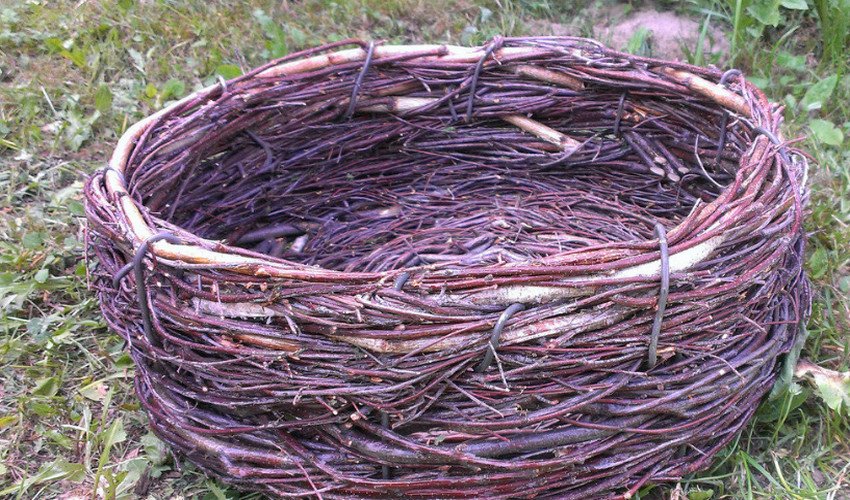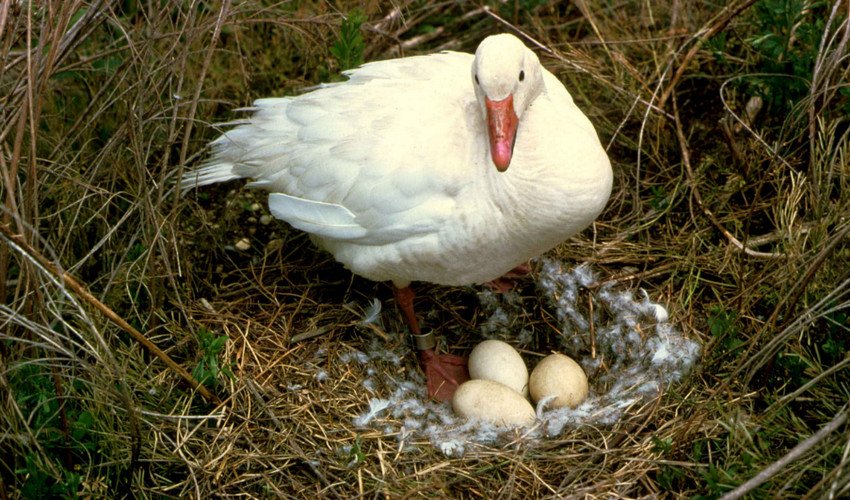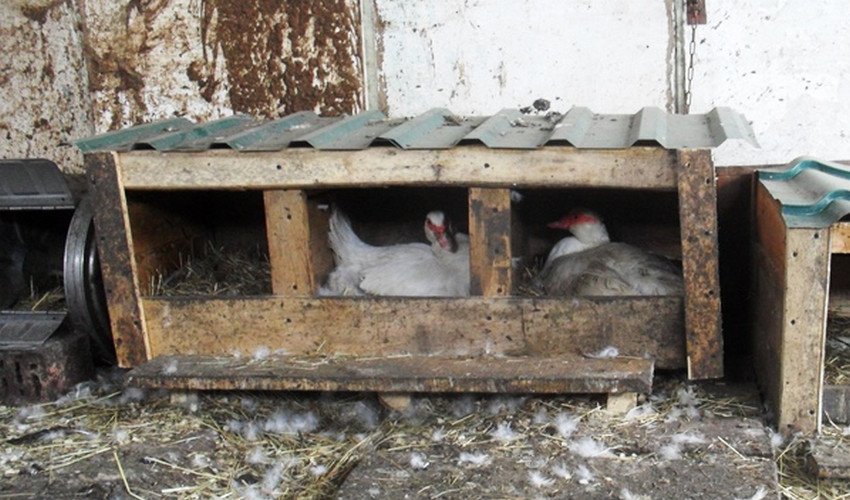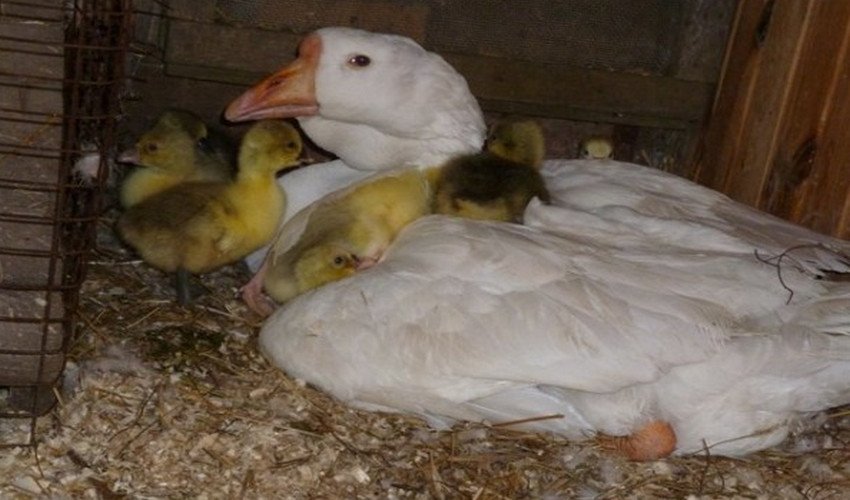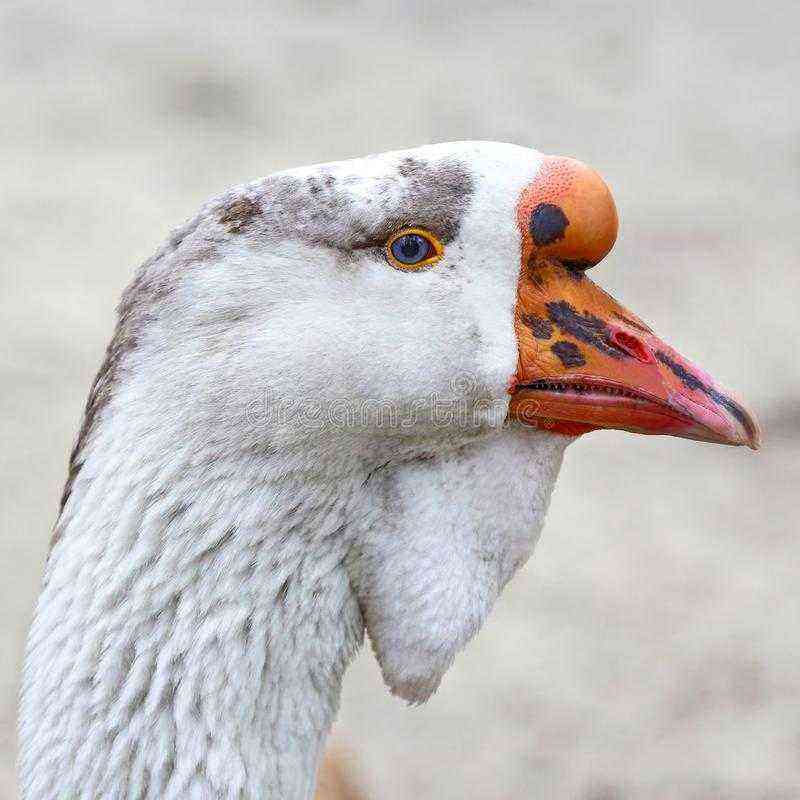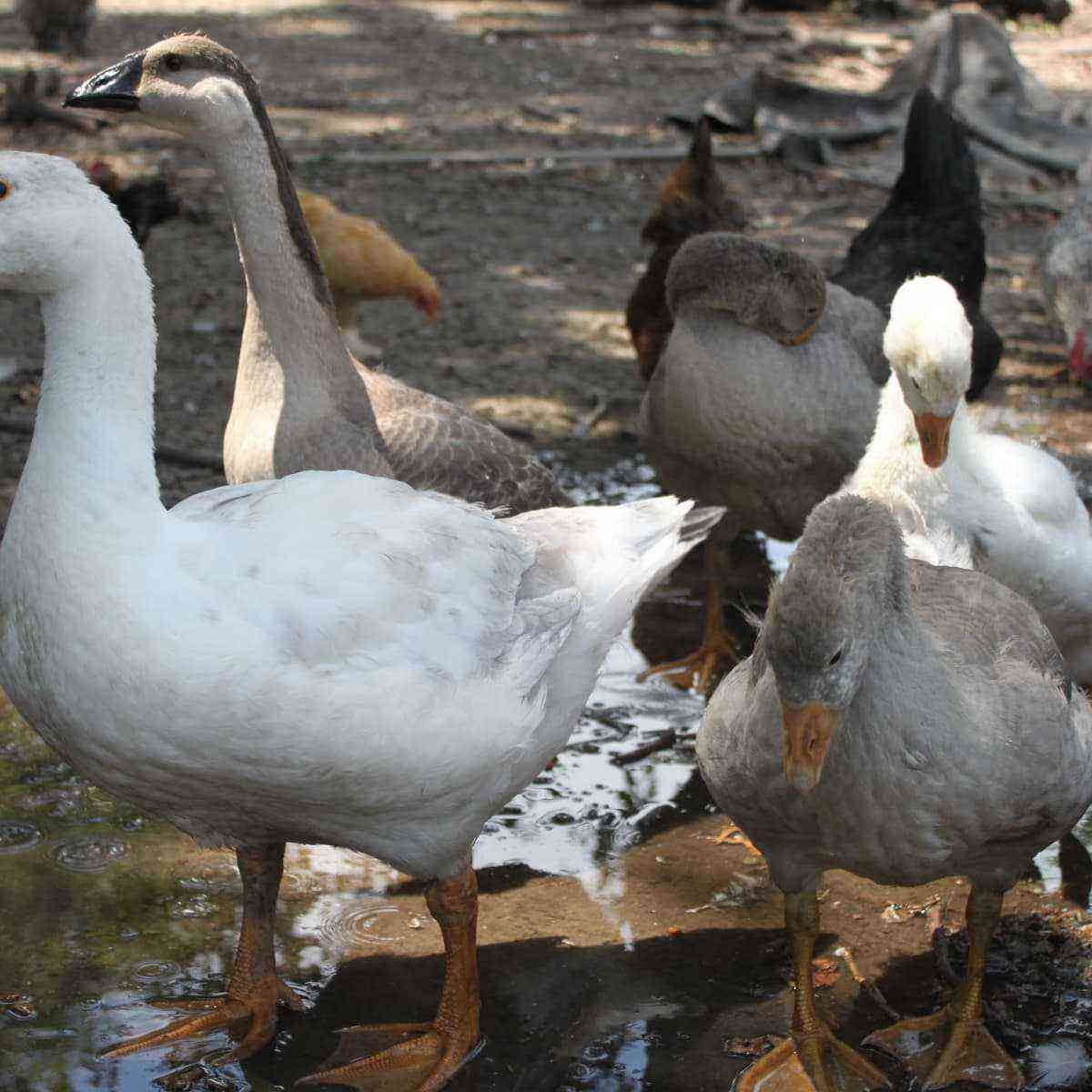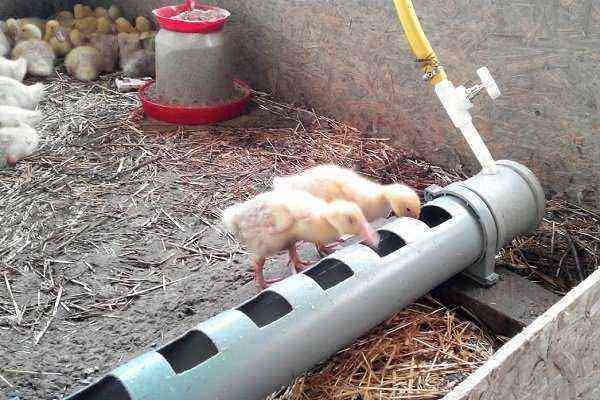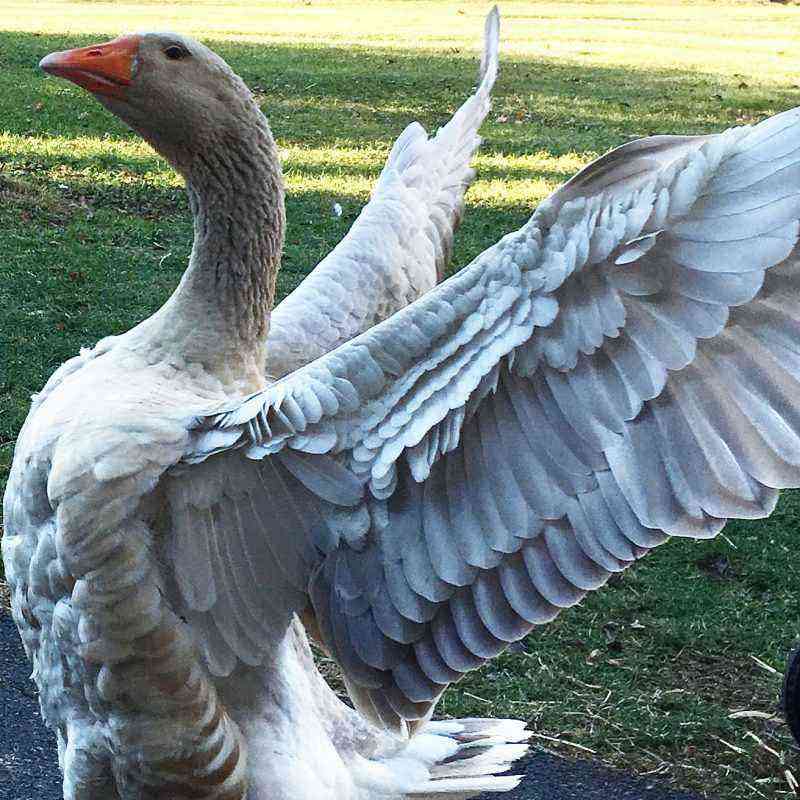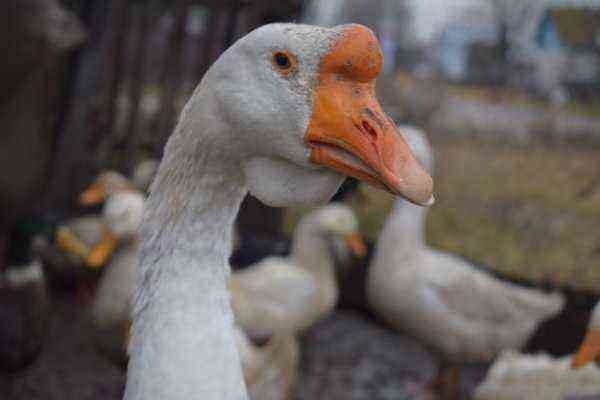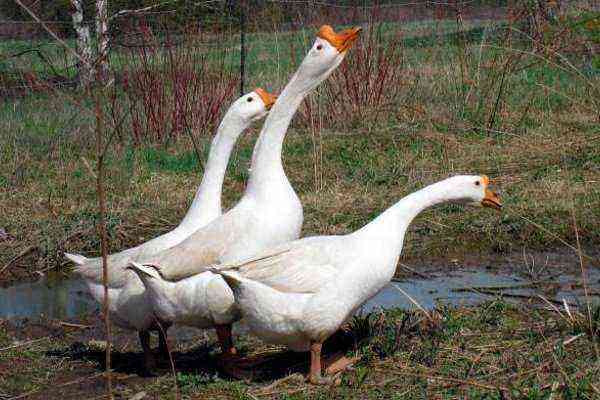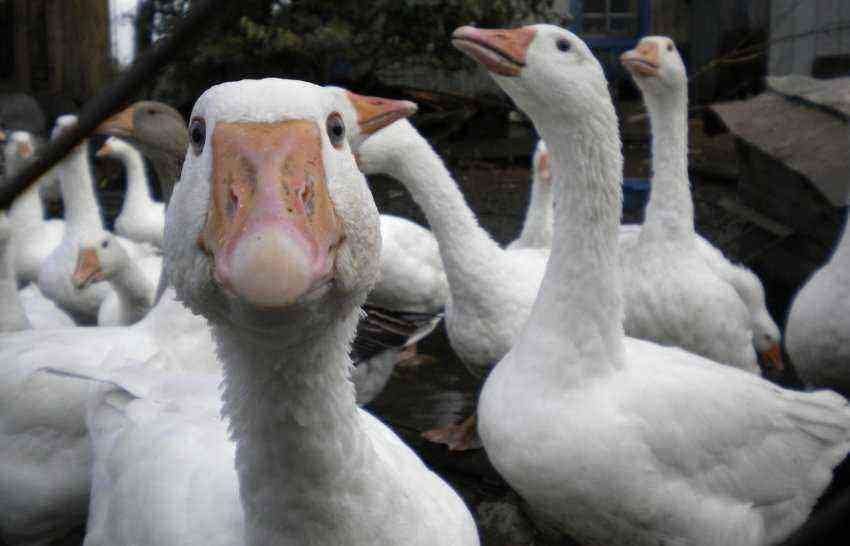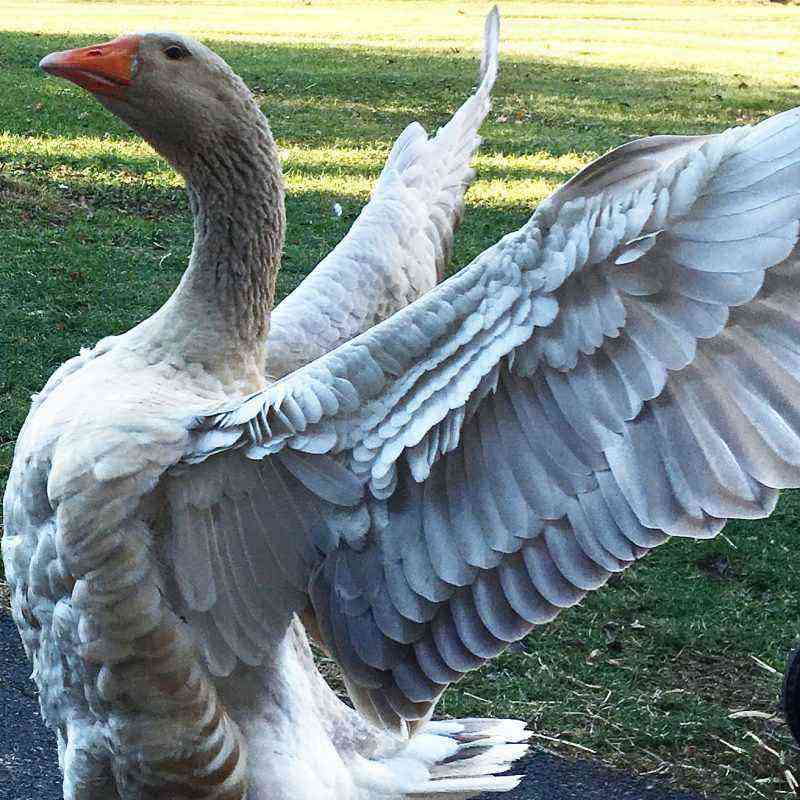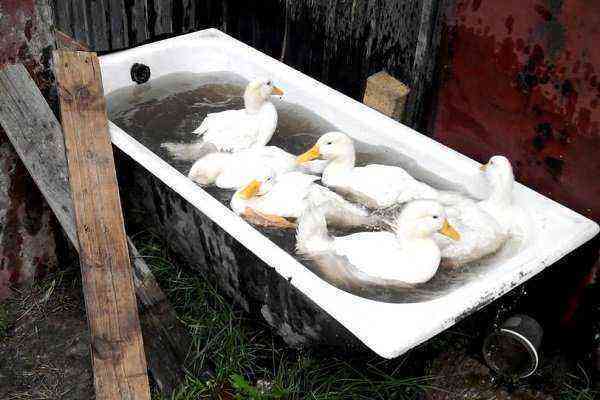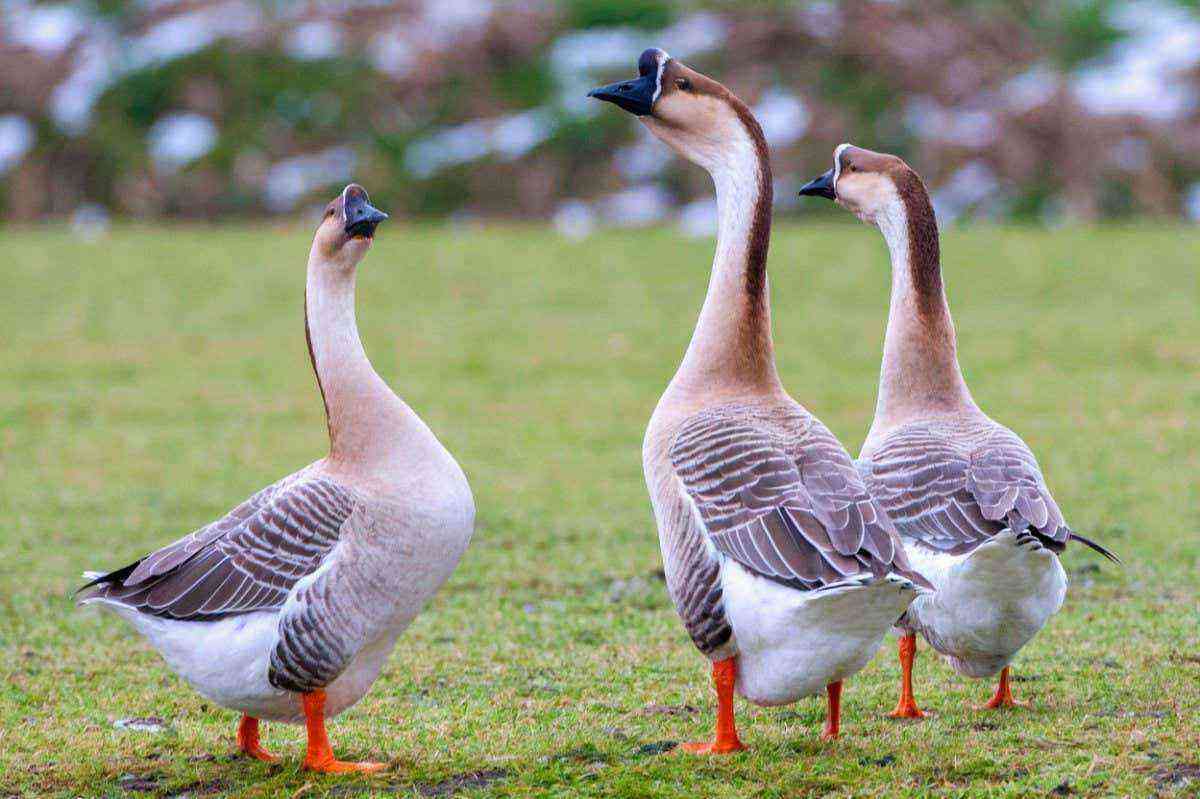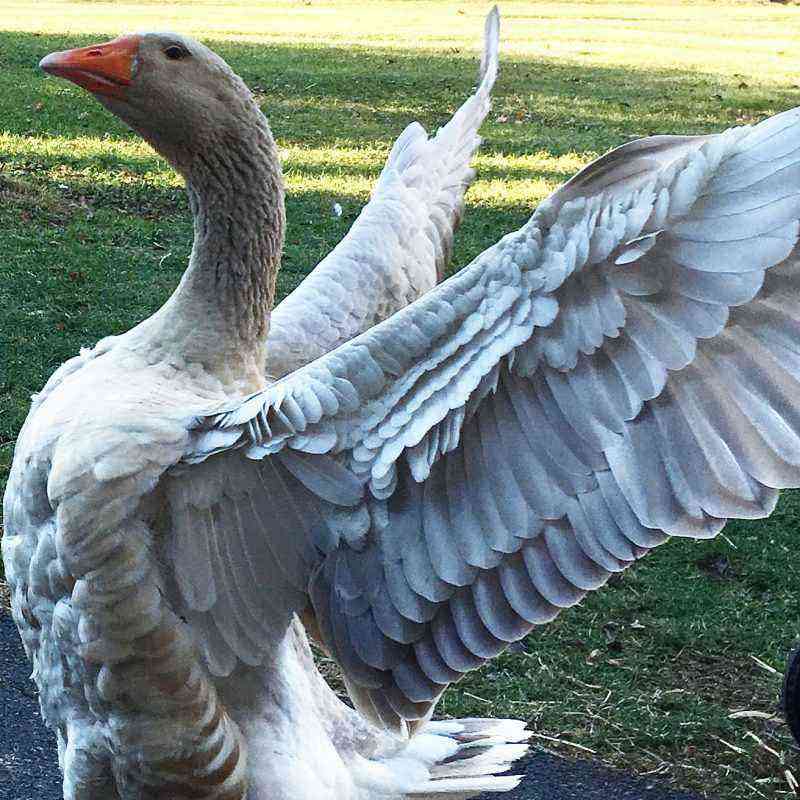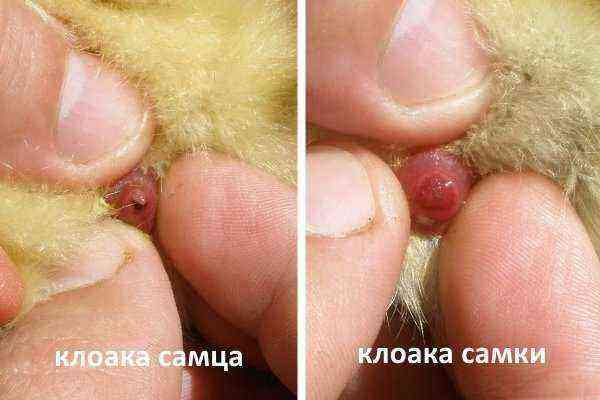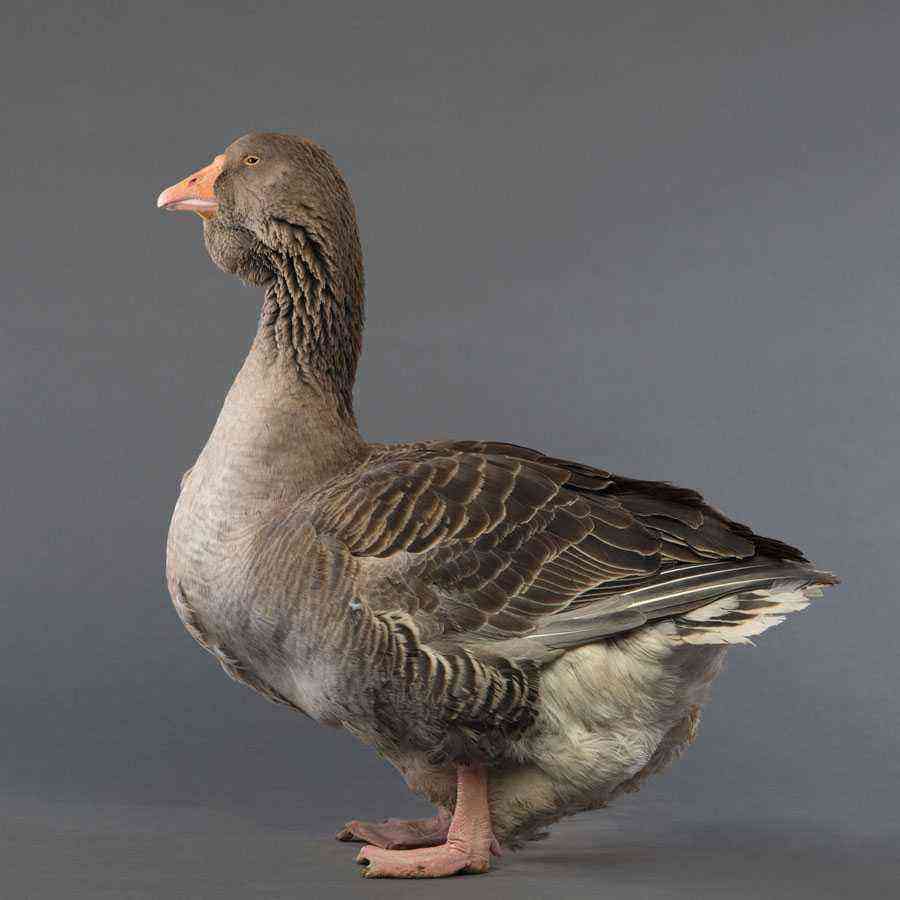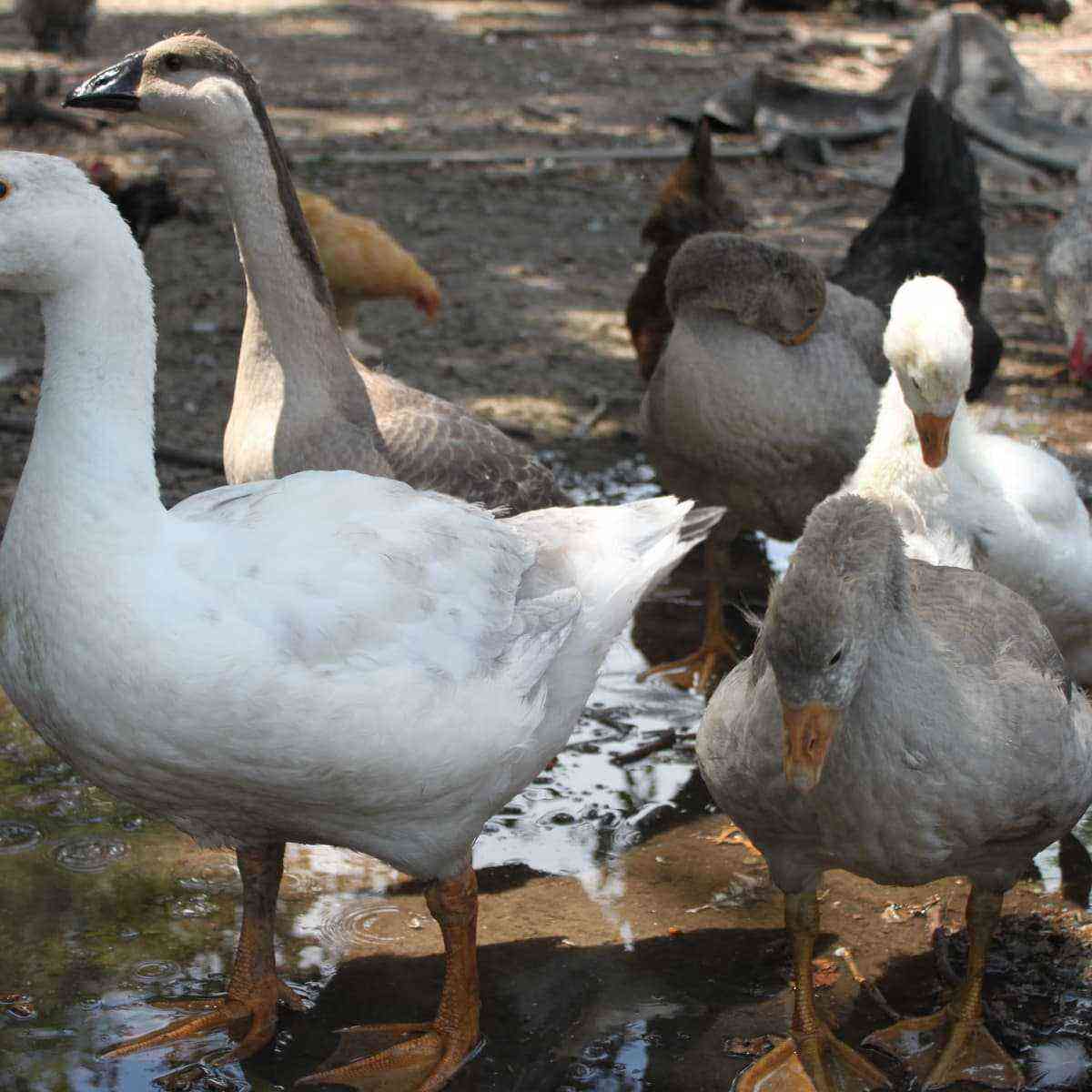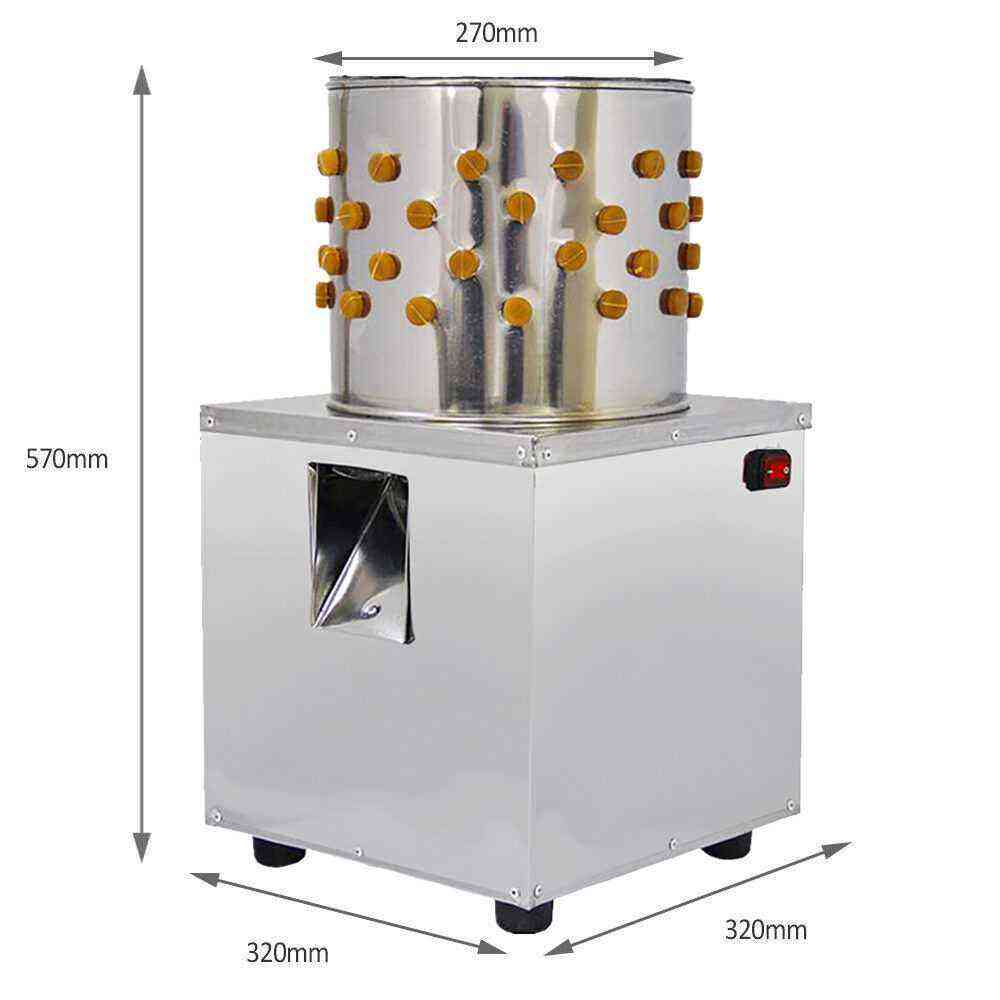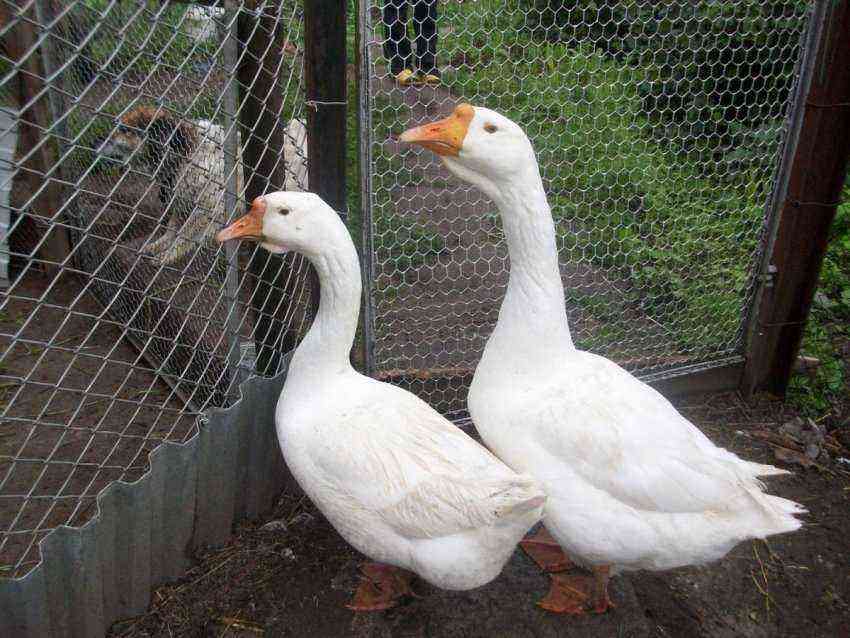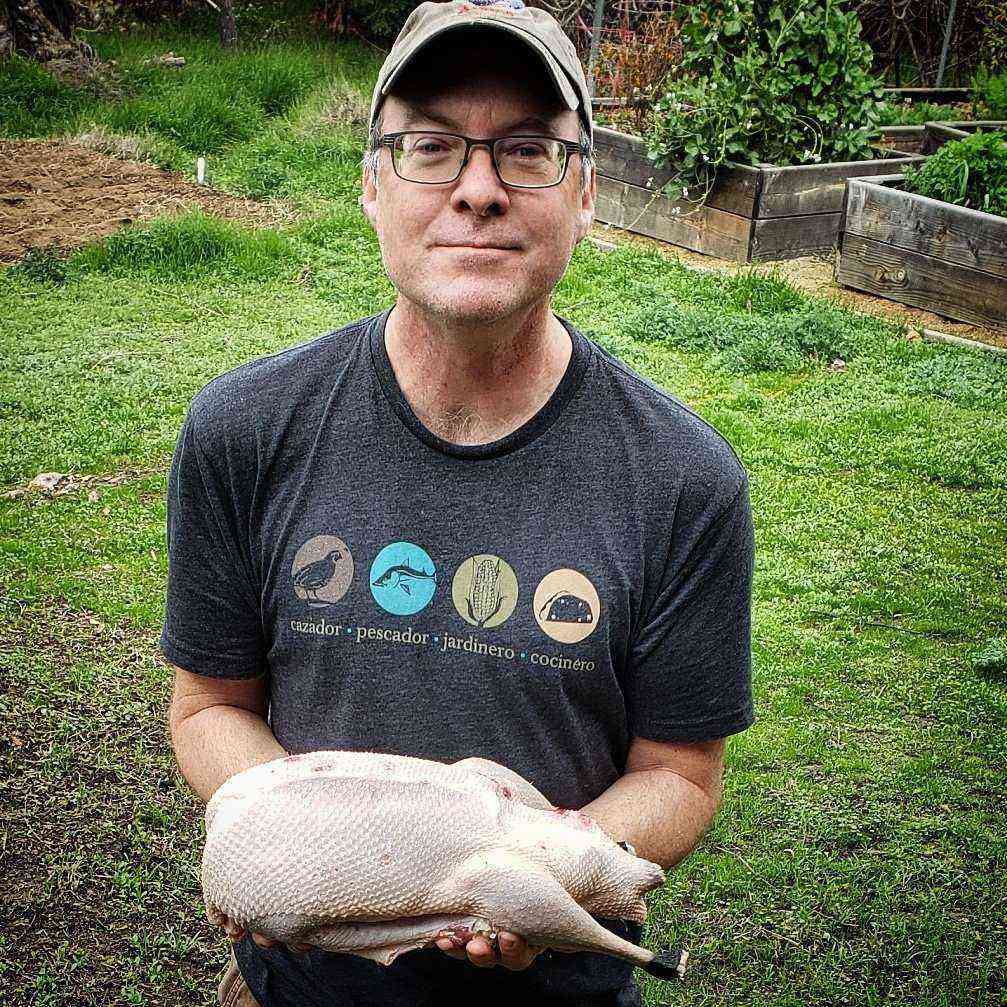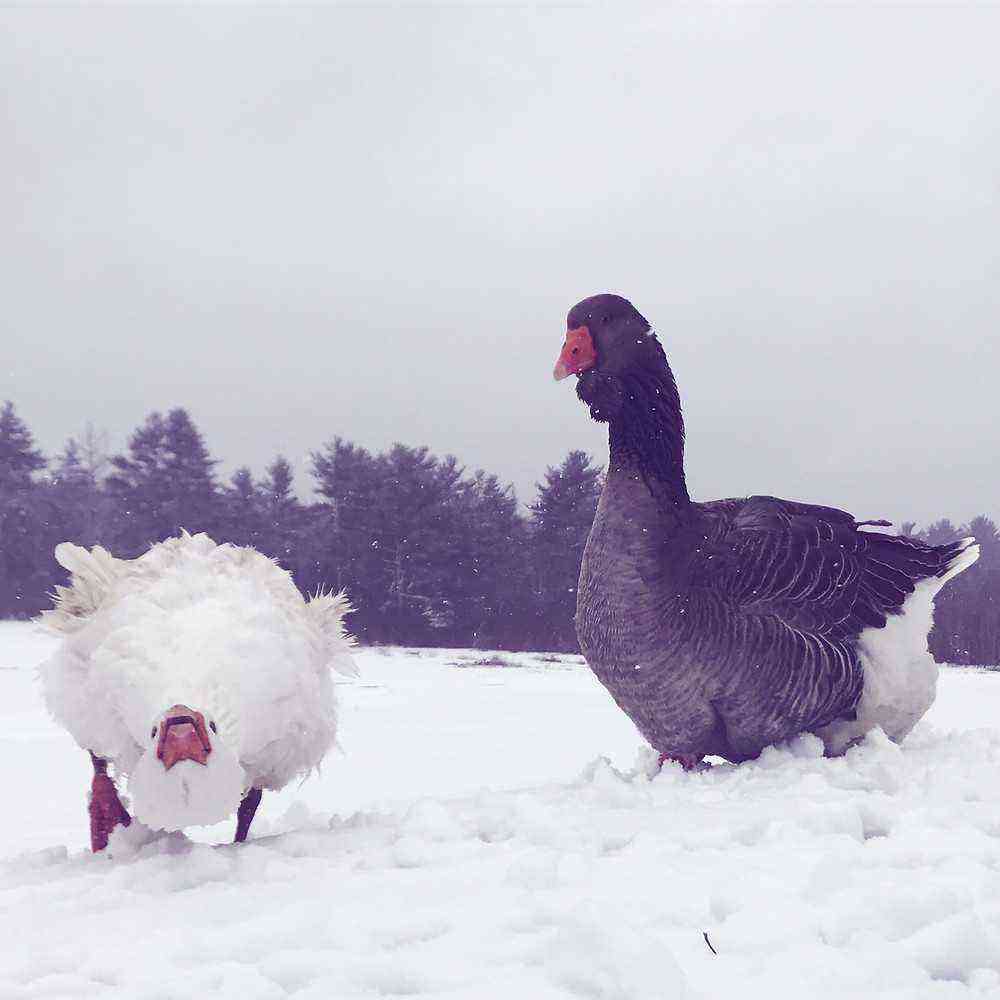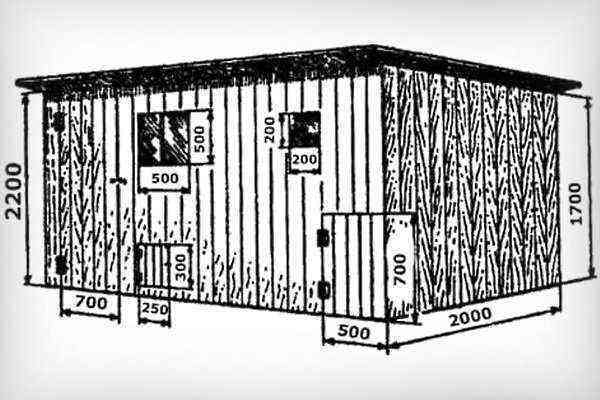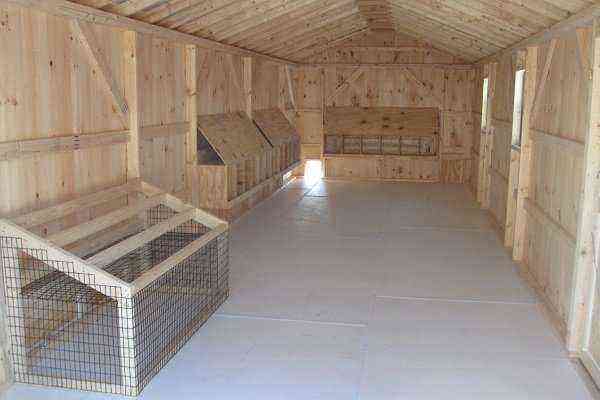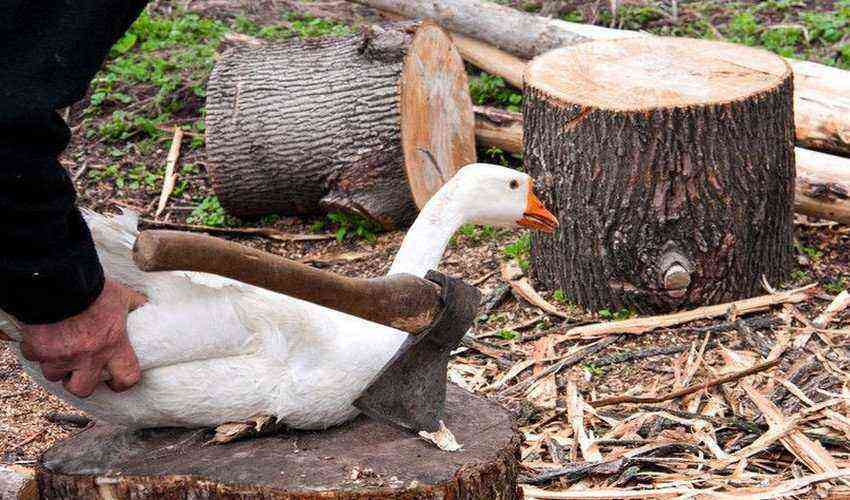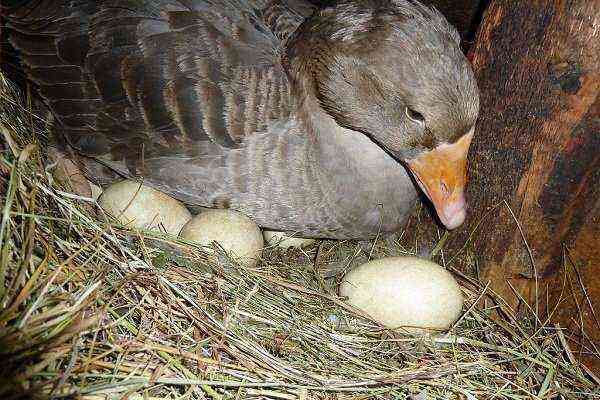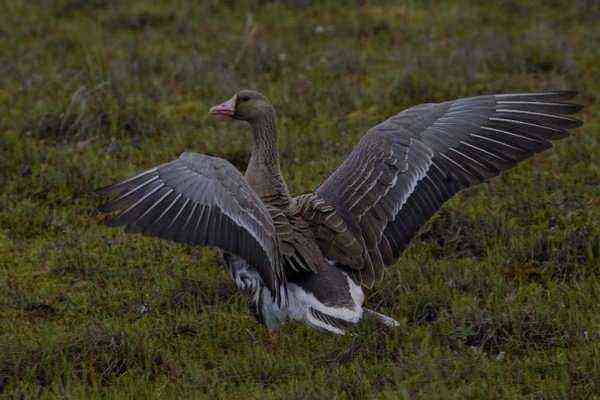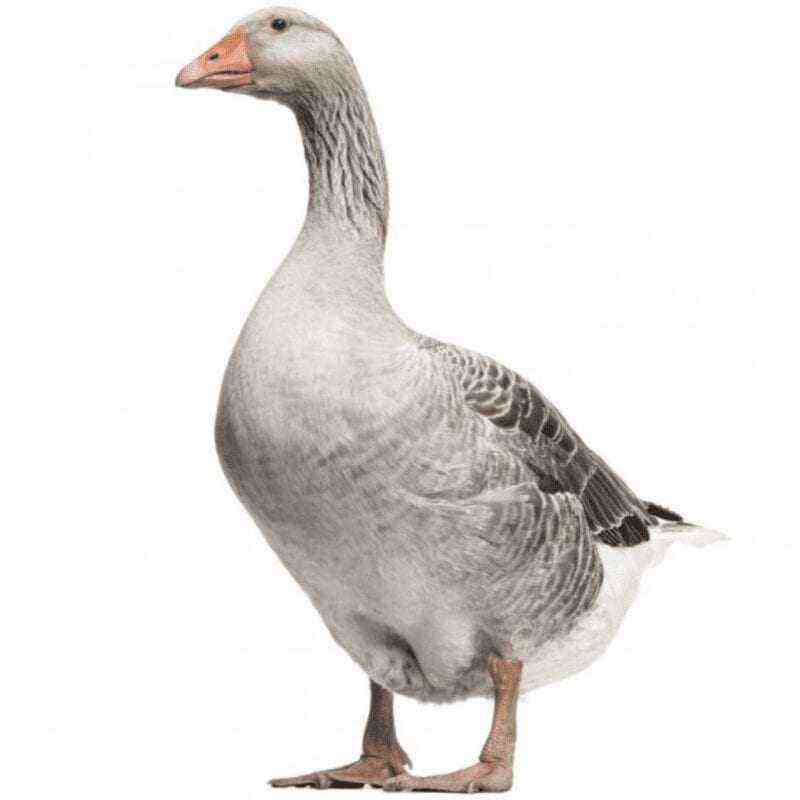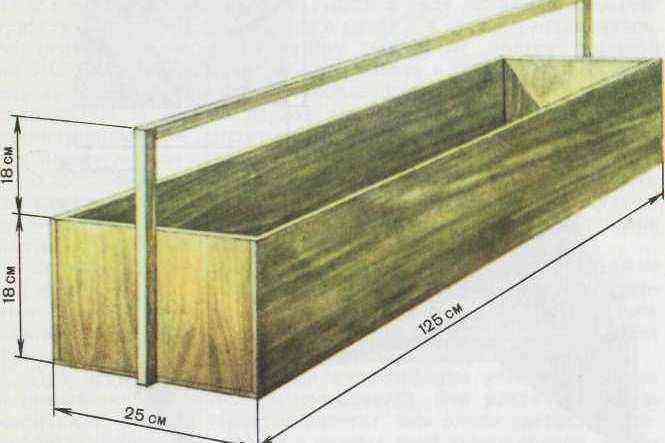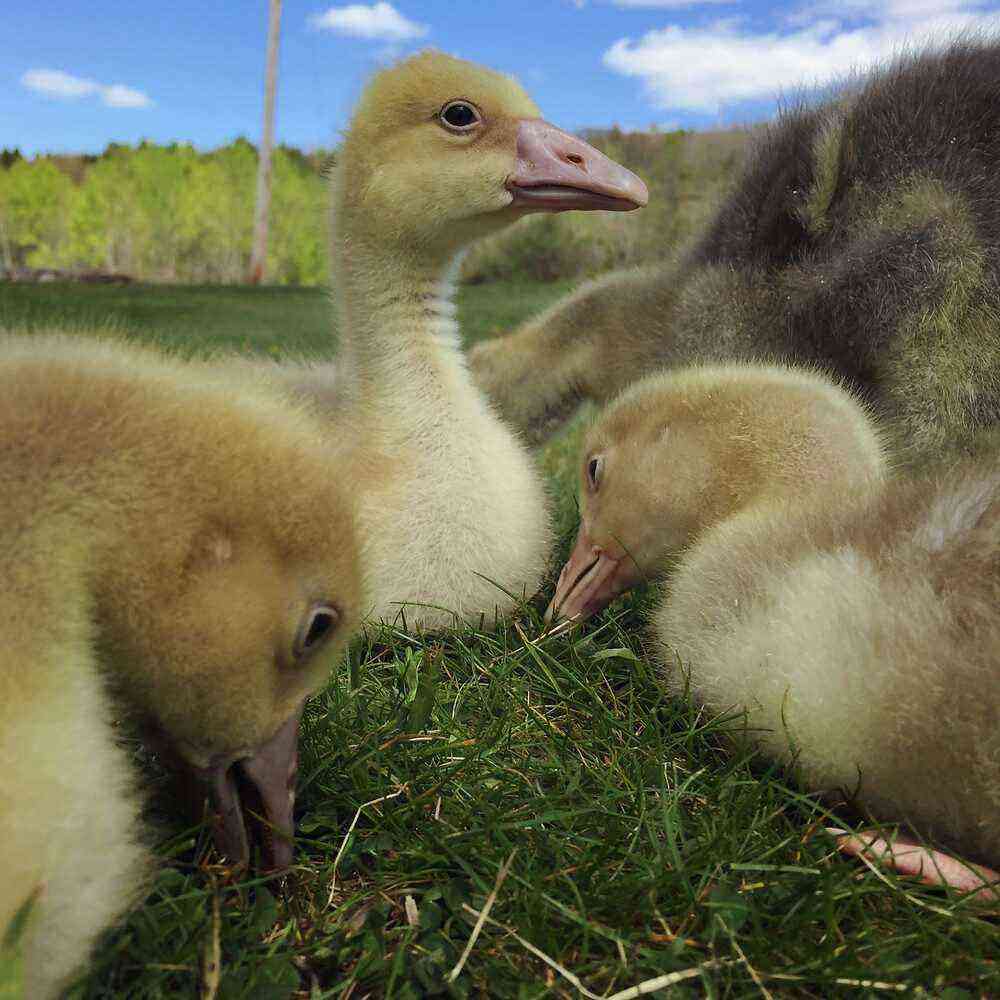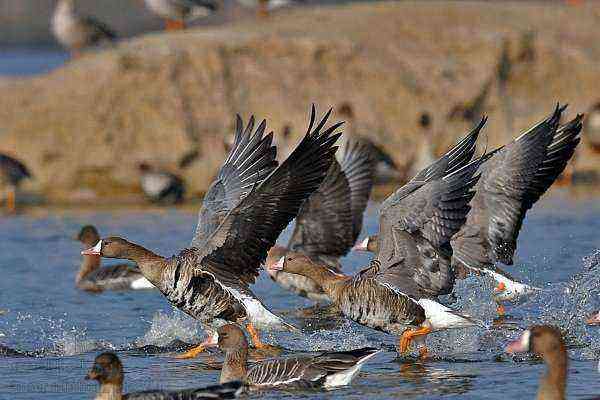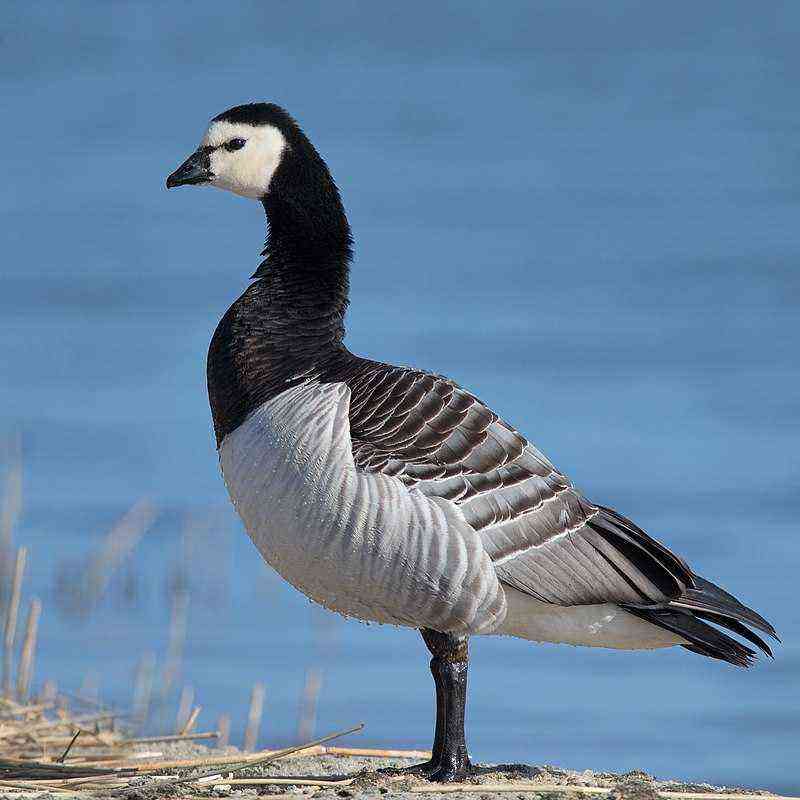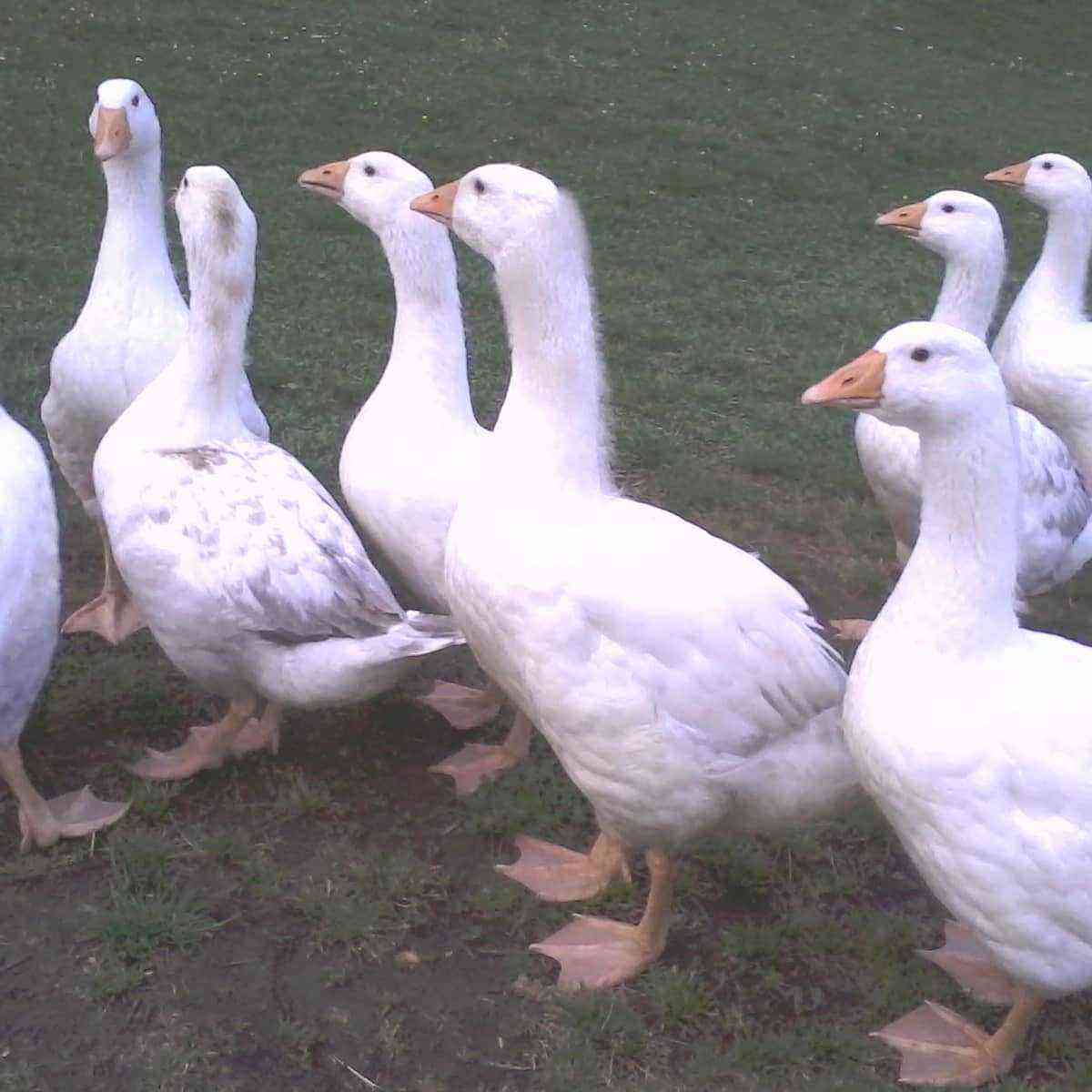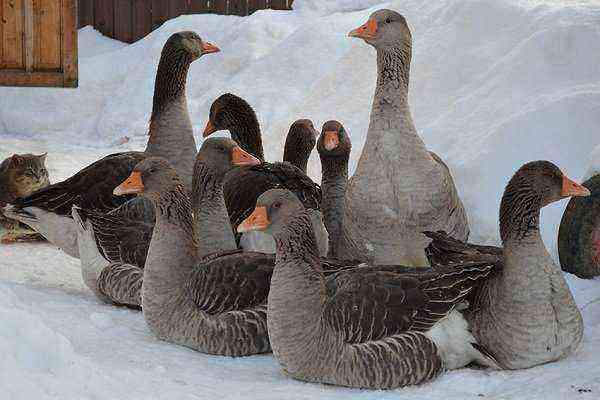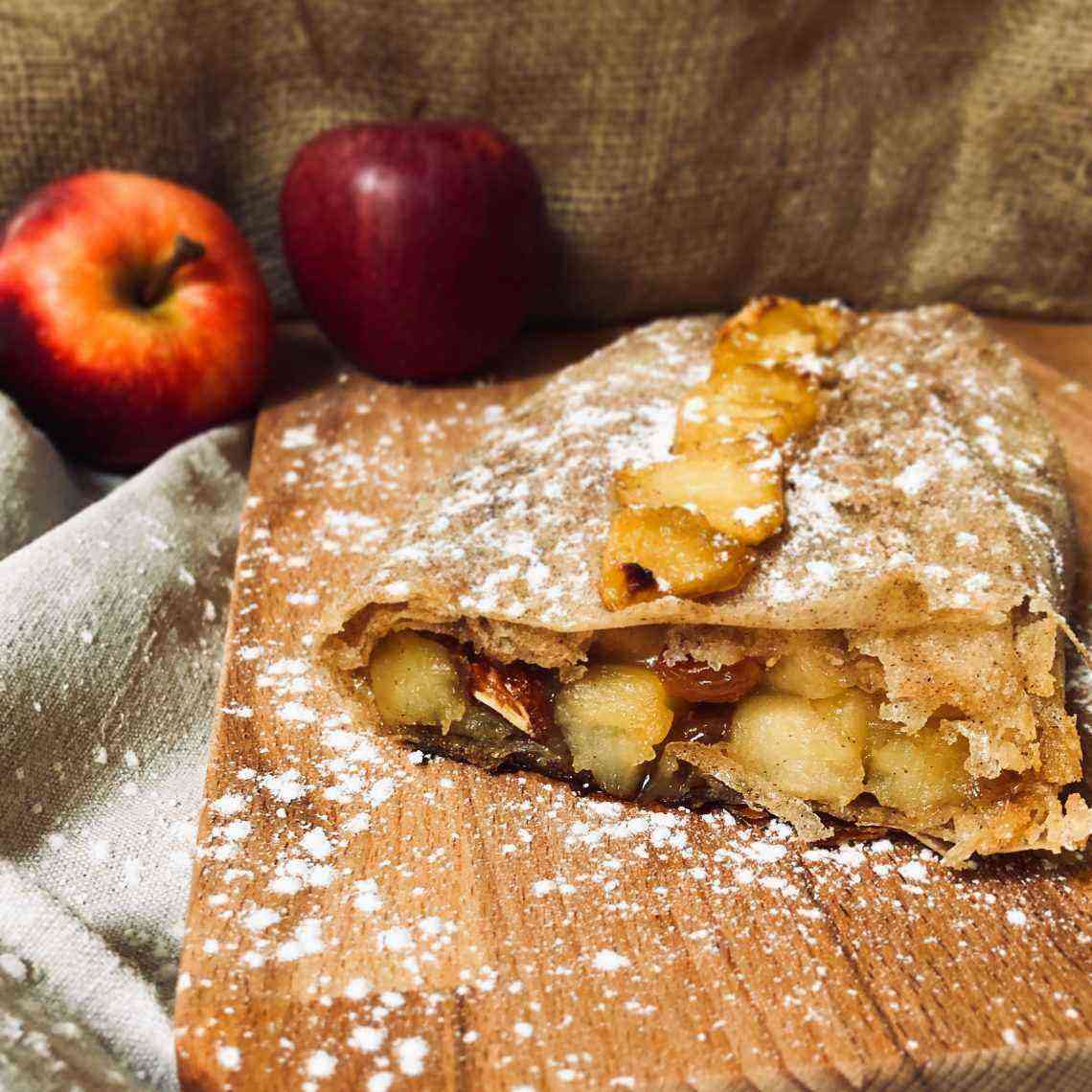Every year, from the end of February to the beginning of March, female geese begin a period of active egg laying and incubation of chicks. To ensure high egg production, you need to equip a suitable place for masonry. How to properly prepare nests with your own hands will be discussed in this article.
Features of the nest for geese
Geese are one of the largest birds living on the farm, so the nests for them must be made large and spacious. In order for the female to sit comfortably in the nest for a long time, you need to take a responsible attitude to its arrangement, adhering to all the requirements.
Types of nests
There are many variations of goose nest designs. In each farm or private household, you can equip them, depending on the availability of the necessary material and the desire of the poultry farmer.
The most common types of nests are described below:
- round, made from an ordinary basket or car tire (or filled with straw);
- with a wooden bottom and slate side walls. From above, the box is also covered with sheets of slate;
- from a construction mesh rolled up in the form of a pipe and fixed with clamps. The structure is attached to a wooden base with wire and lined with straw;
- a number of separate wooden sections with a small entrance and blank partitions – for a large number of geese.
Nest requirements
In order for the place for laying and incubation of eggs to be convenient for the bird, you need to take into account some important points in its arrangement.
Did you know? Geese are loyal to one gander. If they lose their male, then for several years they cannot form a pair with another gander.
Here are the basic rules of his equipment:
- Enough space for the bird. The dimensions of a standard goose nest are 50 cm wide, 65-70 cm deep and 60-70 cm high. Depending on whether it will be used for laying eggs or for hatching chicks, the depth can be made more or less.
- Closed back. It is necessary so that nothing frightens the bird and does not distract from behind, as well as to fix the litter at the bottom of the structure.
- Low plank in front. Its height can be from 10 to 15 cm. Such a board is needed to hold the litter.
- High side walls. It is undesirable for a goose hatching eggs to be distracted by external factors. If several goose nests are arranged side by side in the house, then such walls will help the females not to disturb each other.
- Timely preparation. It is necessary to equip suitable places for laying eggs for geese a month before the start of the breeding period birds. Females usually start laying eggs around the end of winter, so nests should be ready by February. The goose must choose one suitable place and rush there.
- Doors on control nests. Necessary for the female to feel completely safe while hatching offspring.
- Convenient entry. So that the laying hen can easily get into the nest, a plank with planks nailed across is laid at an angle in front of the entrance. One edge of the plank rests on the ground, and the other – on the edge of the nest, forming a bridge for a convenient entry of the bird.
- Choice. In order for a goose to want to incubate eggs, she must like nesting. It is recommended to arrange several sections for birds nearby so that the female can choose the best for herself.
Making a goose nest
To make a good goose nest yourself, you do not need special skills or special materials. Each poultry farmer uses the resources that are at hand. The main rule of manufacture is the choice of natural material that will not let the cold through. that is why most often the places for laying eggs are made of wooden slabs or wicker.
In the shape of a wooden box
You can arrange a warm and cozy place in a wooden box made by yourself.
For this you will need:
- OSB sheet 11 mm thick;
- end saw;
- screwdriver;
- screws;
- slats;
- electric jigsaw;
- pencil.
Important! The number of nests is determined by the number of geese in the herd. For 3-4 females, one nest will be enough.
The finished box will have dimensions:
- width – 40 cm;
- depth – 60 cm;
- height – 50 cm;
- the height of the upper and lower sides in front – 10 cm each.
Do-it-yourself nests for geese: video
Below is a step-by-step instruction for making a wooden box with your own hands:
- Mark a sheet of OSB with a pencil into rectangles measuring 40 x 60 cm (2 pcs. – For the bottom and roof), 60 x 50 cm (2 pcs. – For the side walls), 40 x 50 cm (1 pc. – For the back wall), 40 x 10 cm (2 pieces – for the upper and lower sides).
- Using a jigsaw, cut the OSB sheet into rectangles of the specified size.
- Separately prepare wooden slats of a certain size for fastening the structural parts together.
- Using a screwdriver and rails, connect the bottom to the lower side, and the roof to the top.
- Attach the bottom of the box to the back and side walls in the same way, so that the bottom edge is in front. From above, fix the roof of the structure with a screwdriver so that the upper side is located in front above the entrance to the box.
It is possible to make in this way a long one-piece structure into three separate sections, separated by partitions.
Woven from twigs
A nest woven from willow twigs has a number of advantages. Females like it, it is easy to make and retains heat well. The walls of such a nest provide good ventilation.
Did you know? If conditions of detention good ones, Domestic geese can live up to 30 years.
To make a wicker basket for geese at home, you will need:
- fresh willow twigs (thick and thin);
- iron spacer ring (diameter 75 cm);
- knife;
- awl.
The finished product will be in the form of a basket with dimensions:
- bottom diameter – 70 cm;
- the height of the sides is 20 cm.
The step-by-step instructions for weaving are as follows:
- To make the base, weave a cross, giving it the shape of a circle. Take an odd number of willow twigs, of which one will be shorter than the rest.
- To prepare the frame, you need to cut a hole in the center of the three rods and insert three more rods into it. Another one needs to be attached to the side of the cross. All protruding rods must be aligned. On the other hand, place another willow rod in the crevice. It will be needed for braiding.
- To weave the bottom of the basket, the coils must be laid very tightly, and the ends of the rods must be hidden next to the rib. Weave in this way the bottom to the desired size.
- For the side part, take 29 large rods and sharpen them with a knife from one end. Arrange the rods so that the distance between them is the same.
- The edge of the nest must be braided with a pigtail. All edges of the branches stick out of the structure and are cut off after weaving is completed.
- Bend the protruding rays and collect the side rods in one bundle above the basket. Secure the bundle with wire and place a spacer ring inside the product. Fix the ring on the sides so that it does not move during further work on the product.
- To weave the edges of the nest, you need to dissolve the assembled bundle of side rods at a height of 20 cm and braid the edges of the structure with them. Wrap one edge around the other, and bend 5 cm near the third edge, cut off. Insert a segment inside the edge parallel to the third edge. Trim the end of the rod and tuck it in. Braid the last rod and trim the protruding edges.
The shape and size of the basket can be chosen at your discretion, making adjustments to this step-by-step instruction.
planting nest
When a goose prepares to hatch chicks, her behavior changes. The female protects her place of laying eggs, flaps her wings when a person appears, almost does not leave the nest and often sits on the eggs. This means it’s time to prepare the place.
The process of arranging such a nest has its own characteristics:
- before placing the eggs in the nest, you need to treat it with a disinfectant. For this purpose, a 2% solution of formalin, caustic soda or bleach is used. Soft straw is usually laid at the bottom – it should provide the mother hen with warmth and comfort;
- the front of the nest must be hung with a cloth so that the hen feels calmer;
- put food and water near the female, since the goose rarely leaves her place;
- it is recommended to put a nest in a warm room with heating so that the eggs do not overcool;
- the mother hen will need the nest in which she constantly rushed, otherwise the goose may refuse to hatch offspring;
- nests with different hens should be placed so that the birds do not see each other; so they will be less nervous.
Important! If the female liked the equipped nest, she begins to cover it with her plucked feathers and down.
Installation and arrangement
So that the hen does not get sick and can bring out healthy goslings, a layer of litter must be laid in the nest. It is important to keep it clean and dry at all times. It is recommended to change the bedding every day.
Geese have a habit of laying eggs in the morning, so bedding should be changed in the evening.
The most commonly used materials are:
- straw;
- peat;
- chopped corn;
- sunflower seed husks;
- sand.
At the bottom it is necessary to pour ashes. This will help prevent the growth of harmful microorganisms. Preparing to incubate offspring, the goose plucks out its down and covers the upper part of the nest with it.
Did you know? When building a nest for one goose, up to 40 kg of bedding materials can be used per year.
Where to install nests
Goose nests should be placed directly on the floor. So that the birds are not cold to sit in them, the floor must be insulated. This can be done with a bed of straw or sawdust.
The rules for choosing a place for arranging a goose nest are as follows:
- the selected area should be in twilight;
- there should be no drafts nearby;
- the entrance to the nesting place should be located on the south side;
- should be a good review;
- convenient location of the structure for daily bedding change.
Sometimes the female does not like the prepared and ideally equipped sections for laying eggs. In this case, she may even begin to rush somewhere on the floor in a dark place. It is impossible to move goose eggs so that the goose does not lose interest in hatching chicks. the arrangement of the place chosen by the female must be carried out in accordance with the requirements described above.
How to make ventilation
If the room is cool and damp, the straw bedding at the bottom of the nest may become damp. This is facilitated by the fact that the bird with its paws brings dirt from the floor and moisture onto it. Wet litter not only becomes cold, but also serves as a favorable environment for the reproduction of harmful microorganisms, so it needs to be changed daily.
For bedding, it is best to use soft straw. It retains heat well and provides additional ventilation.
Temperature conditions
Adult geese perfectly tolerate sub-zero temperatures, but the cold is dangerous for eggs. If they are exposed to low temperatures for a long time, they can freeze, and then it will not work to bring out the goslings.
In rooms with goose nests in the cold season, it is necessary to maintain a positive temperature and warm them well.
Important! Do not place the nest next to cold walls or near doors – there may be drafts.
Eggs should be stored at a temperature not exceeding +12°C. It is best to take them from the nests immediately after laying. So they can be collected for two weeks, and then put on the goose for incubation.
Additional recommendations
Female geese are sometimes stubborn when choosing where to lay their eggs. If they do not like the proposed design, they will not want to rush in it (and even more so hatch chicks).
Here are some additional tips for nesting:
- Each female needs to prepare a personal place (this is ideal).
- You can equip one large structure for 3-4 females if they belong to the same goose family.
- During the short daylight period, lighting is required from 6:00 to 20:00.
- Males should not be allowed near the nests, they irritate the geese.
- So that the female does not refuse to hatch eggs, she cannot be transplanted into someone else’s nest.
- To stimulate the goose to lay eggs and hatch chicks, white dummies of eggs are placed on it.
Proper arrangement of nests for geese will help ensure high egg production of birds and make it possible to hatch a sufficient number of chicks.

